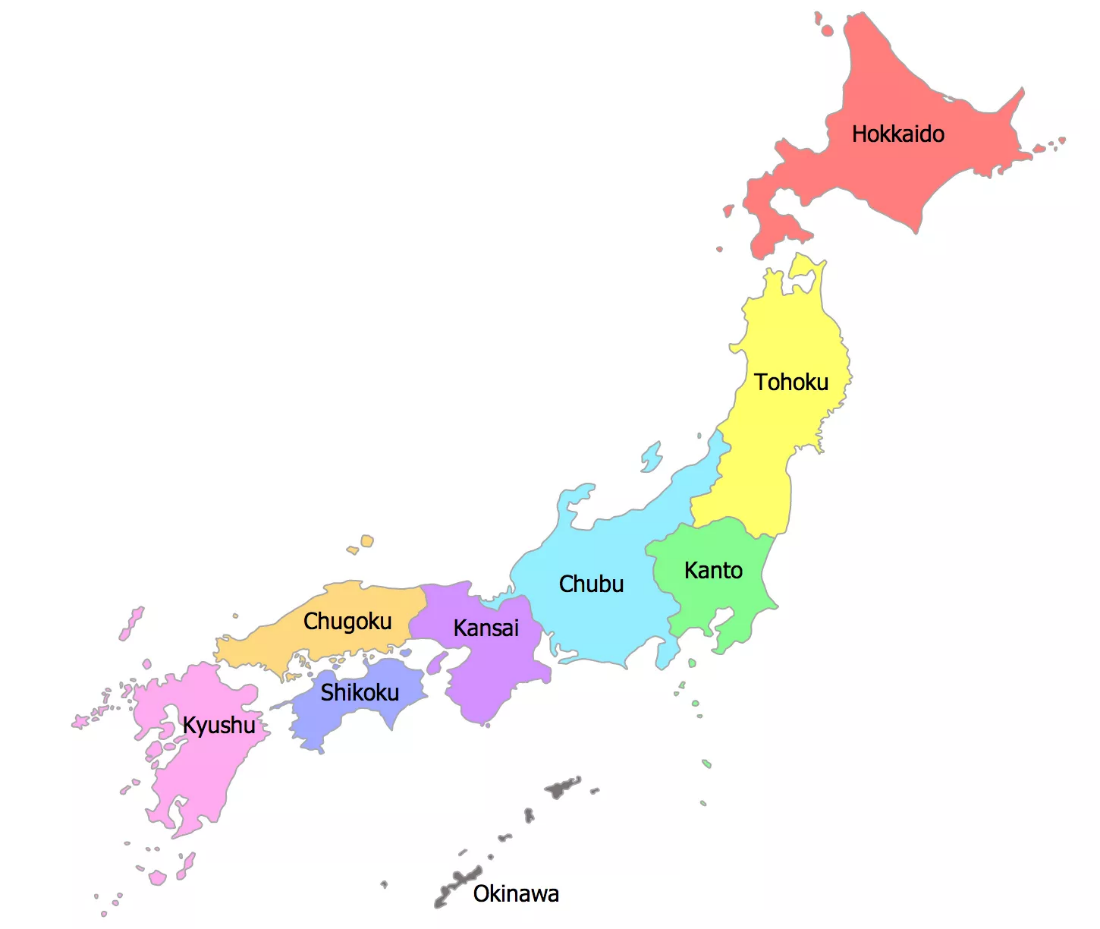Language History
The history of the Japanese language has caused much debate among scholars. Some theories suggest that it belongs to Ural-Altaic family, which includes Turkish, Mongolian, Manchu, and Korean. It was during the 6th century AD when the Chinese culture began influencing Japan including its writing system, giving Japanese the chance to write for the first time. In fact, approximately 40% of modern Japanese vocabulary still features words adapted from Chinese. The 12th century saw the syllabic writing systems, “hiragana” and “katakana” arise out of “kanji” (Chinese characters), giving Japanese a sense of freedom when it came to their writing system. In the 16-17th centuries, the language was influenced by Portuguese, Dutch and Spanish, giving rise to similar, common words. The 18th century also saw the adoption of “gairaigo”- foreign words mainly from English.
[/vc_pangea_service_desc_block][/vc_column][/vc_row][vc_row css=”.vc_custom_1621802429026{background-color: #f1f2f0 !important;}” el_class=”bg-grey”][vc_column css=”.vc_custom_1557920245922{margin-top: -90px !important;margin-bottom: -50px !important;}”][vc_pangea_custom_block layout=”center” button_color=”#d15f45″ content_font=”Open Sans” button_popup_form=”” button_text=”Get in Touch” button_link=”url:https%3A%2F%2Fportal.stg-wpml.pangea.global%2Frequest-quote%2F|||”]Approximately 130 million people speak Japanese which makes it the 9th most spoken language in the world. The majority reside in Japan however other fluent speakers live in Korea, China, the U.S, Canada, Australia and other parts of Asia.[/vc_pangea_custom_block][/vc_column][/vc_row][vc_row css=”.vc_custom_1557920359208{margin-bottom: -50px !important;background-color: #ffffff !important;}”][vc_column css=”.vc_custom_1557920302161{margin-top: -50px !important;margin-bottom: -30px !important;}”][vc_pangea_custom_block layout=”center” heading_font=”Futura Std” content_font=”Open Sans” title=”Japan and its Regions”]The most widely spoken language in Japan is Japanese however it has several (around 14) dialects with Tokyo’s dialect considered the ‘standard Japanese’. In addition to Japanese, Ryukyuan languages are spoken in regions like Okinawa and parts of Kagoshima.
www.kyuhoshi.com
[/vc_pangea_custom_block][/vc_column][/vc_row][vc_row content_placement=”middle” css=”.vc_custom_1621802435676{margin-top: 50px !important;margin-bottom: 50px !important;padding-bottom: 50px !important;background-color: #f2f1f0 !important;}” el_id=”no-max-width-container” el_class=”bg-grey”][vc_column width=”1/2″ css=”.vc_custom_1573122903805{margin-top: 90px !important;margin-right: 10px !important;background-color: #f1f2f0 !important;}”][vc_pangea_custom_block layout=”center” background_color=”” content_font=”Open Sans” h_font=”” text_font=”” title=”FACT” css_custom_id=”text-near-bubble” background_image=”5847″]Ever since the mid-20th century, no nation other than Japan uses Japanese as a first or second language.[/vc_pangea_custom_block][/vc_column][vc_column width=”1/2″ css=”.vc_custom_1573123175172{margin-top: 36px !important;background-color: #f1f2f0 !important;}”][vc_pangea_custom_block layout=”center” background_color=”” content_font=”Open Sans” title=”Did you Know?” background_image=”5847″ css_custom_id=”text-near-bubble”]The most similar language to Japanese is Korean. They share the same features like structure, vowel harmony and lack of conjunctions.Their pronunciations however are very different![/vc_pangea_custom_block][/vc_column][/vc_row][vc_row css=”.vc_custom_1621802439711{margin-top: -80px !important;margin-bottom: 20px !important;background-color: #f1f2f0 !important;}” el_class=”bg-grey”][vc_column css=”.vc_custom_1557924349014{margin-top: 30px !important;margin-bottom: 20px !important;}”][vc_pangea_quote_block font=”Futura Std” quote_text=”“Japanese translation services are incredibly important and popular among the social and business industries.””][/vc_column][/vc_row][vc_row css=”.vc_custom_1557924452761{background-color: #ffffff !important;}”][vc_column css=”.vc_custom_1557924635264{margin-top: -50px !important;}”][vc_pangea_custom_block layout=”center” content_font=”Open Sans” title=”Japanese and Chinese”]Japanese’s very complex writing system consists of two phonetic syllabaries with around 50 syllables each, as well as approximately 2000 Chinese characters (汉字 “hanzi” in Chinese, or 漢字 “kanji” in Japanese).[/vc_pangea_custom_block][/vc_column][/vc_row][vc_row content_placement=”middle” el_id=”no-max-width-container” css=”.vc_custom_1552573667816{background-color: #ffffff !important;}”][vc_column css=”.vc_custom_1552573644704{margin-top: -50px !important;background-color: #ffffff !important;}”][/vc_column][/vc_row][vc_row css=”.vc_custom_1621802443734{margin-top: -40px !important;background-color: #f1f2f0 !important;}” el_class=”bg-grey”][vc_column css=”.vc_custom_1557923465531{margin-top: -40px !important;margin-bottom: -30px !important;}”][vc_pangea_custom_block layout=”center” content_font=”Open Sans” title=”Differences in Numbers – Chinese and Japanese”]
Same system, same characters, differences in phonetics:
[/vc_pangea_custom_block][/vc_column][/vc_row][vc_row content_placement=”middle” css=”.vc_custom_1621802448323{background-color: #f1f2f0 !important;}” el_class=”bg-grey”][vc_column css=”.vc_custom_1591280151942{margin-top: -50px !important;}”][vc_wp_text title=” “]| Number | Character | Chinese | Japanese |
|---|---|---|---|
| 1 | 一 | yi | ichi |
| 2 | 二 | er | ni |
| 3 | 三 | san | san |
| 4 | 四 | si | shi |
| 5 | 五 | wu | go |
| 6 | 六 | liu | roku |
| 7 | 七 | qi | shichi |
| 8 | 八 | ba | hachi |
| 9 | 九 | jiu | ku |
| 10 | 十 | shi | ju |
| 100 | 百 | bai | hyaku |
| 1,000 | 千 | qian | sen |
| 10,000 | 万 | wan | man |
• 台風 (たいふう) – Typhoon
• カラオケ (からおけ) – Karaoke
• 絵文字 (えもじ) – Emoji
• 寿司 (すし) – Sushi
• 空手 (からて) – Karate
[/vc_pangea_custom_block][/vc_column][/vc_row][vc_row content_placement=”middle” el_id=”no-max-width-container” css=”.vc_custom_1549543529121{margin-bottom: 40px !important;padding-top: -100px !important;background-color: #ffffff !important;}”][vc_column width=”1/2″ css=”.vc_custom_1549535411591{margin-top: 50px !important;}”][/vc_column][vc_column width=”1/2″ css=”.vc_custom_1549535427465{margin-top: 50px !important;border-top-width: -100px !important;}”][/vc_column][/vc_row][vc_row content_placement=”middle” css=”.vc_custom_1591280182513{margin-top: -150px !important;margin-bottom: -50px !important;background-color: #ffffff !important;}”][vc_column css=”.vc_custom_1557921690973{margin-top: -80px !important;margin-bottom: -20px !important;}”][vc_pangea_custom_block layout=”center” title=”4 Easy Phrases in Japanese! “][/vc_pangea_custom_block][/vc_column][/vc_row][vc_row content_placement=”middle” css=”.vc_custom_1591280270137{background-color: #ffffff !important;}”][vc_column][vc_wp_text title=” “]| Japanese | English |
|---|---|
| こんにちは - Kon'nichiwa | Hello |
| さようなら - Sayōnara | Goodbye |
| はじめまして - Hajimemashite | Nice to meet you |
| 助けて - Tasukete | Help |
Japan Population:
126,854,745
Internet Users:
118,626,672
Penetration:
93.5%
As of 2019. Source: www.internetworldstats.com
[/vc_pangea_tip_block][/vc_column][vc_column width=”1/2″ css=”.vc_custom_1573044829425{margin-top: 10px !important;}”][vc_pangea_custom_block layout=”center” background_color=”” content_font=”Open Sans” h_font=”” text_font=”” css_custom_id=”text-near-bubble” title=”FACT!” background_image=”5847″]The Japanese grammatical system uses different levels to express politeness and formality –• Plain form (“Kihonkei”)
• Simple polite form (“teinei”)
• Advanced polite form (“keigo”)[/vc_pangea_custom_block][/vc_column][/vc_row][vc_row css=”.vc_custom_1557924750766{background-color: #ffffff !important;}”][vc_column css=”.vc_custom_1557924974304{margin-top: -40px !important;margin-bottom: -30px !important;}”][vc_pangea_custom_block layout=”center” content_font=”Open Sans” title=”Japanese Translation Tips”]
• Remember that Japanese has a dense grammatical system when expressing politeness and formality – depending on your audience, select the most suitable tone – normal (普通), polite (丁寧), and honorific (尊敬).
• Be sure to use the right characters – hiragana (for naturalised Japanese words and grammar structures), kanji (Chinese characters that can replace or be combined with certain hiragana), and katakana (used for foreign words and names, scientific or technical terms).
• Always look over a sentence when translating into Japanese as you’ll probably have to change the word order. Japanese sentences are structured in the order of subject, object and then verb. This differs to English which is ordered as subject, verb and then object.
[/vc_pangea_custom_block][/vc_column][/vc_row][vc_row css=”.vc_custom_1621802458883{background-color: #f1f2f0 !important;}” el_class=”bg-grey”][vc_column][vc_pangea_custom_block layout=”center” content_font=”Open Sans”]Are you looking for professional Japanese translation services? Get in touch with Pangea Global! We’ll hook you up with one of our professional linguists who will provide you with accurate and reliable Japanese localization services, copywriting, voice overs and more![/vc_pangea_custom_block][/vc_column][/vc_row][vc_row css=”.vc_custom_1621802463971{background-color: #f1f2f0 !important;}” el_class=”bg-grey”][vc_column css=”.vc_custom_1557924920503{margin-top: -30px !important;margin-bottom: 40px !important;}”][vc_pangea_cta_button button_text=”Get In Touch” button_link=”url:https%3A%2F%2Fstg-wpml.stg-wpml.pangea.global%2Fquote%2F|||”][/vc_column][/vc_row][vc_row full_width=”stretch_row”][vc_column][/vc_column][/vc_row]



